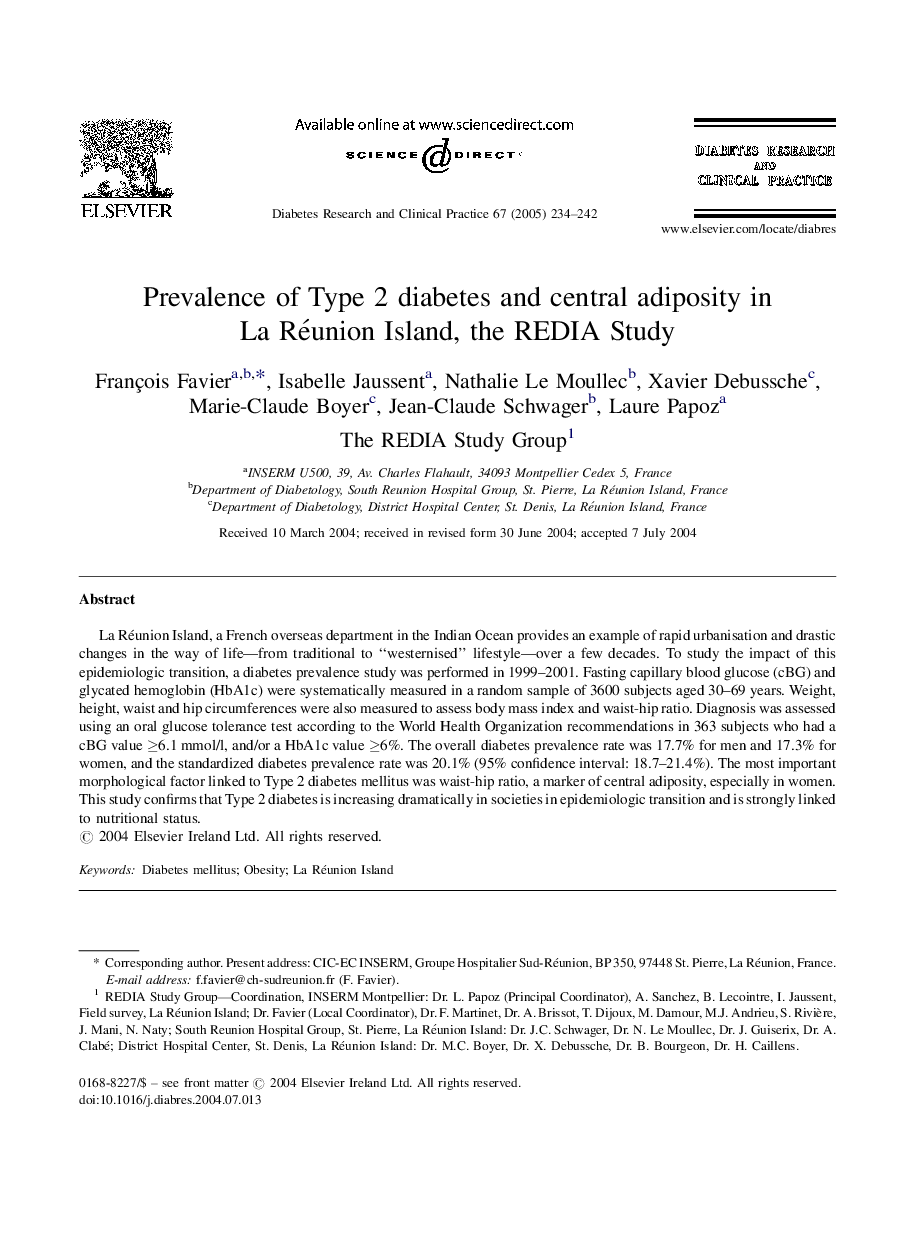| Article ID | Journal | Published Year | Pages | File Type |
|---|---|---|---|---|
| 9112061 | Diabetes Research and Clinical Practice | 2005 | 9 Pages |
Abstract
La Réunion Island, a French overseas department in the Indian Ocean provides an example of rapid urbanisation and drastic changes in the way of life-from traditional to “westernised” lifestyle-over a few decades. To study the impact of this epidemiologic transition, a diabetes prevalence study was performed in 1999-2001. Fasting capillary blood glucose (cBG) and glycated hemoglobin (HbA1c) were systematically measured in a random sample of 3600 subjects aged 30-69 years. Weight, height, waist and hip circumferences were also measured to assess body mass index and waist-hip ratio. Diagnosis was assessed using an oral glucose tolerance test according to the World Health Organization recommendations in 363 subjects who had a cBG value â¥6.1 mmol/l, and/or a HbA1c value â¥6%. The overall diabetes prevalence rate was 17.7% for men and 17.3% for women, and the standardized diabetes prevalence rate was 20.1% (95% confidence interval: 18.7-21.4%). The most important morphological factor linked to Type 2 diabetes mellitus was waist-hip ratio, a marker of central adiposity, especially in women. This study confirms that Type 2 diabetes is increasing dramatically in societies in epidemiologic transition and is strongly linked to nutritional status.
Related Topics
Life Sciences
Biochemistry, Genetics and Molecular Biology
Endocrinology
Authors
François Favier, Isabelle Jaussent, Nathalie Le Moullec, Xavier Debussche, Marie-Claude Boyer, Jean-Claude Schwager, Laure Papoz, The REDIA Study Group The REDIA Study Group,
